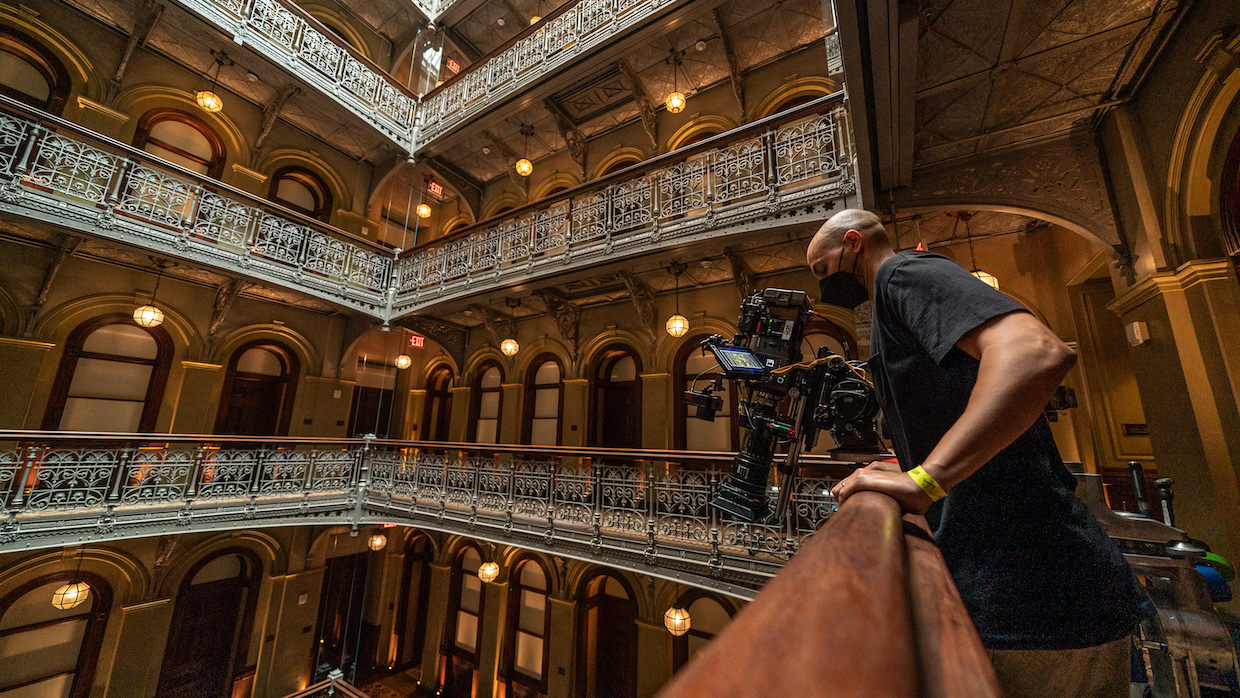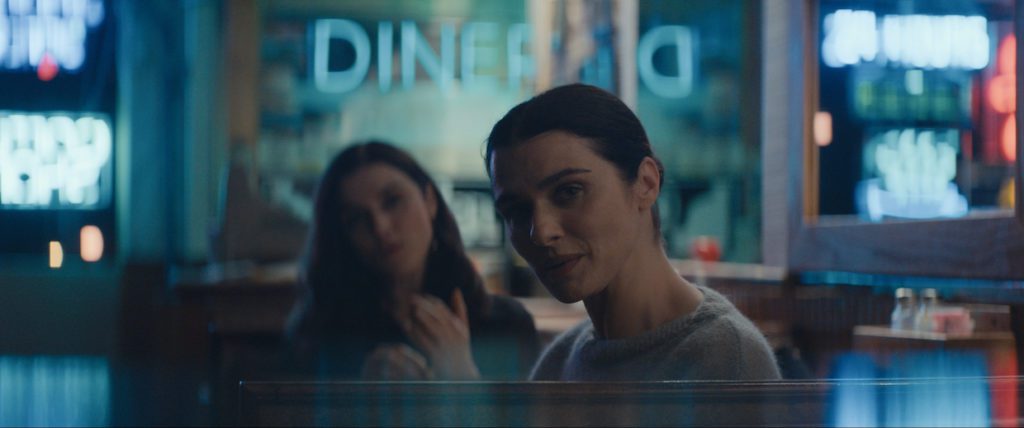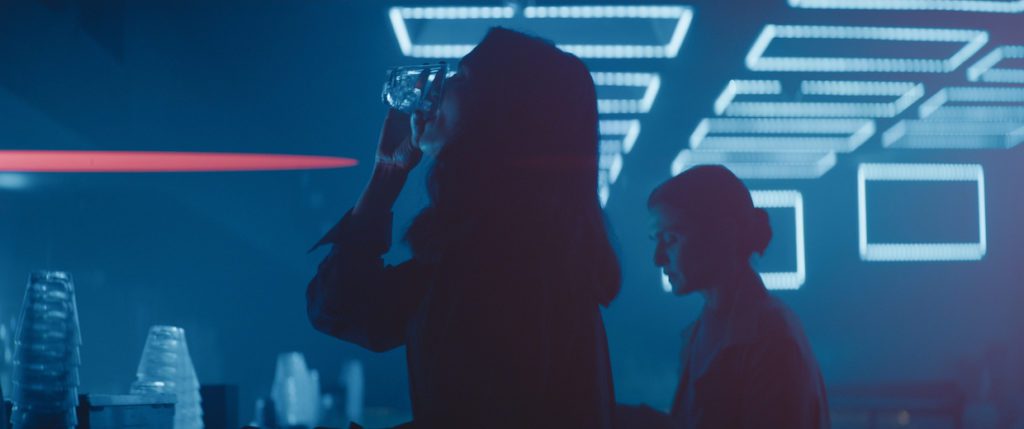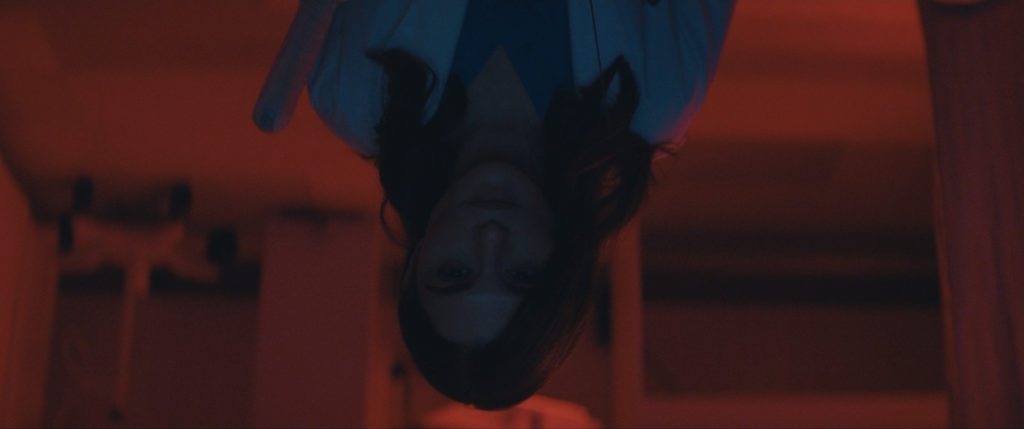 Back to selection
Back to selection
Shutter Angles
Conversations with DPs, directors and below-the-line crew by Matt Mulcahey
“Annoying, Finicky Placement Stuff”: DP Jody Lee Lipes on Shooting Two Rachel Weiszs for Dead Ringers
 Jody Lee Lipes on the set of Dead Ringers
Jody Lee Lipes on the set of Dead Ringers Cinematographer Jody Lee Lipes says that shooting an actor playing twins is like learning a new filmmaking language. By now, he’s fluent.
Lipes lensed all six episodes of the 2020 HBO miniseries I Know This Much Is True, with Mark Ruffalo playing identical twins. As an added complication, the coverage of each brother was shot months apart as Ruffalo took a hiatus to gain 30 pounds to physically transform himself into the other sibling.
On the new Amazon series Dead Ringers, it’s Rachel Weisz starring as twin New York City gynecologists who meet a tragic end. The show is a new take on David Cronenberg’s 1988 film of the same name. The original took advantage of recent technological advances—a smaller portable motion control unit and an invisible traveling soft split screen process—to create the illusion of Jeremy Irons sharing the screen with himself. However, most of the subterfuge was achieved with body doubles or locked off cameras, with the two performances then optically composited together in post. Only a handful of sequences featured a dollying or panning camera effect with dueling Ironses.
For the new Dead Ringers, the degree of difficulty has increased exponentially for Lipes and fellow series DP Laura Merians Goncalves. With the show currently streaming in its entirety on Amazon Prime, Lipes walked Filmmaker through the process of “twinning.”
Filmmaker: How did the twinning work on Dead Ringers compare to I Know This Much Is True?
Lipes: I Know This Much Is True was way harder and more complicated because of that break where Mark gained weight. Dead Ringers was actually much simpler for me, because everything was happening the same day instead of three or four months apart. We were also shooting digitally rather than on film. It was also easier just because I had done it before, and I had the advantage of working with a lot of other people who had too. Eric Pascarelli was the visual effects supervisor on both shows. Johnny Erbes-Chan was the key grip on both shows. Some of the camera department—operator Sam Ellison and one of the ACs—were on both. A lot of the team had experience with it before. So, this was kind of a walk in the park compared to I Know This Much Is True.
Filmmaker: Alice Birch, the series creator, said that during the writing process, they tried not to limit themselves by thinking about how technically difficult a scene might be. They wanted to write the series as if there were two different actresses playing the twins. Then during preproduction, everyone looked at the logistics of the scripts and decided what was and wasn’t achievable.
Lipes: I think you do that with any production. There’s the script and then there’s the reality of making it, but working with [one actor playing] twins is like learning a whole new filmmaking language. There are things that take time or are really logistically complicated that you don’t necessarily think of if you haven’t done it before. There were things that we had to go back to Alice with and say, “Normally, we’d be able to pull this off, but that’s going to be something we just can’t have that much of in the show because it takes so much time to do.” Everything takes longer. For example, scenes at dawn or dusk are hard to get in. You can’t just do one piece of coverage, because anything with twinning isn’t going to be done just one time. After you do Rachel’s A side, she has to change into her other wardrobe, then you have to go again. And when she does the B side, you have to match what she did in the A side take. So, even shooting the other side of coverage takes an exponentially longer period of time compared to a normal shoot.
Filmmaker: Let’s talk through some of the different twinning situations, starting with the simplest. You’ve got a locked off camera and you’re essentially doing a split screen where neither twin crosses into the other’s space. So, basically, you do the A side. Then, while Rachel is going through hair, wardrobe and make-up changes, you’re choosing the A side takes you like the best, so you know what to match the B side to.
Lipes: As a reference, we would sometimes split the [monitor] screen in half and put the take from the A Side on one side of the screen and then the live feed on the other side, with the opacity at something like 50 percent so you could match the physicality or check the eyelines.
One of the hardest things to get right was just the eyelines. Something that seems really simple—where is Rachel supposed to look?—could get very complicated and, if there was movement, we had to make sure that she was looking in the right place at the right time.
Filmmaker: How did you get this close-up where the faces of the two twins seemingly blend together?
Lipes: That shot would be hard even if there were two actors. It’s a really precise visual thing and if somebody is even a millimeter up or down in the frame, the effect is totally destroyed. When you have to do that shot with the same person [in both positions], it’s a very painstaking and time-consuming process. It just takes patience and it’s also about Rachel’s patience too. It’s a lot of annoying, finicky placement stuff and Rachel was always totally on board for that.
Filmmaker: Did you shoot the top version of Rachel clean without her stand-in?
Lipes: We used Kitty [Hawthorne]—Rachel’s acting partner [who filled in as the other twin to give Weisz someone to play off]—to set up that shot, then right before [we rolled] we took her out of the frame. After we shot the A side, we laid that [on the monitor] over the B side to use as visual reference to get her in the right place in the foreground. Then you also shoot a plate with nothing there to be able to manipulate that as well.
Filmmaker: In the diner scene that opens the show, there’s a rack focus from Weisz’s Elliot in the background to her twin sister Beverly in the foreground booth. Is that rack focus something you can program into the motion control rig?
Lipes: Yeah, the motion control is supplying you with a constant and that could be the framing, where you’re panning to and exactly at what time, or how quickly you are tilting. It can also be a zoom or a focus rack. The system can play all of those back for you based on what you’ve already shot and what you want to repeat precisely. You can isolate all of those things too if you don’t want to play any of them back and you want to do it manually. With the focus, a lot of the time you’re not wanting to play that back because it’s such a nuanced thing. You want to control that manually, so you can respond to what Rachel’s doing, because it’s never going to be identical to what the acting partner did [when she played that twin on the other side of the coverage]. Then it’s about making sure that if the focus between the first and second pass is slightly different in timing that they’re not conflicting with each other, which gets into Eric Pascarelli visual effects territory and deciding whether you want to not rack and just stay on one person the whole time and then the other person the whole time for the B side. If you do that, you want to make sure you supply the visual effects people with a reference of what out-of-focus would look like in this particular setting with this particular lens and this particular lighting.
Part of the reason I wanted to bring him Eric onto this was because of how honest he tries to be to the original photography and the lengths that he’ll go to honor what was happening in the room. Sometimes from the visual effects department it’s about being safe and saying, “This is going to be really hard, so maybe we shouldn’t do it.” With Eric, it’s more like, “This is what the shot should be, so let’s do it. These are the potential risks, and these are the elements we need to supply to the visual effects people to make it easier to deal with later, but we’re not going to shy away from doing things that are difficult.”
Filmmaker: The club scene in episode one seems like it would be tough because you have all these color changes and lighting cues that you have to program so that they’re repeatable for both sides of Rachel’s performance.
Lipes: Exactly. It’s so precise, but it’s also a little bit up to chance because of how fast the light is strobing. Then there’s these pretty dramatic flares in there too, and those flares are intermittent because the lighting is intermittent. What we’re supplying to Eric in that case is basically putting black in front of the camera far enough away so that you can catch all the flares, but have the flares isolated so that they’re not over any imagery. Then you can manipulate those flares independently if you need to later, so you can change the timing to make it sync up between the two versions of the shot with the two Rachels.
Filmmaker: What are those lights in the club ceiling? They look like a bunch of tiny little sources as opposed to one long LED tube.
Lipes: Those are just the shitty LEDs that were in the ceiling of the club that we were shooting in.
Filmmaker: Those lights were already there?
Lipes: Yeah, all of that stuff was there, then we were able to control the color and dimming and any changes that happened in them through their board. They’re just individual diodes strung together to make shapes. That’s why they look like dots. We did a test shoot for that scene at that club to make sure that their lights would behave and that we could control them, and also that we could make the speed of the light changes and the strobing sync. That was probably the hardest thing that I’m aware of for Eric in the episodes that I did. We had done twinning stuff with lighting changes on film before and it was really challenging as well. So, this was sort of like round two of that and trying to make it even more dramatic and seeing if we could make that happen, which Eric miraculously did.
Filmmaker: For some of the shots where the twins physically interact with each other, I was reading about how you and the series’ other DP, Laura Merians Goncalves, would sometimes use a simple trick. You’d use the acting partner’s arm from the A Side and then basically try to get Rachel to hold her arm in the same position on the B Side of coverage. Then the arms would be blended together to create a seamless effect. Is that what you did for this shot of Elliot drawing blood from Bev?
Lipes: If I remember correctly, in the blocking rehearsal Eric said that the sleeve of her scrubs was going to be a potential line between the real Rachel and Kitty, the acting partner. I think that is exactly what happened, but it’s been a while since the shoot, so I can’t be sure.
Filmmaker: In episode one, there’s a long walk-and-talk with the twins and the shot is in shadow. Did you have huge blacks to keep the sun off of them so you’re not dealing with inconsistent shadows or the sun ducking behind clouds?
Lipes: That scene was the sisters on their way to work, so it’s quite early in the morning. We wanted to go for a feeling of pre-sunrise, like there’s ambiance in the sky, but it’s not fully daylight yet. [Director] Sean Durkin picked this building and I felt like if we started at a certain time of day and really limited the coverage and kept it very simple, we’d be able to get a pretty good amount of it in before the sun came up enough that it would start coming down our side of the street. But then, as is often the case in New York, there were a billion windows reflecting the sun onto the shadow side of the street. Once we got the wider stuff done and went into the coverage, Johnny Erbes-Chan, our key grip, had to do a lot of flagging work to keep the direct light off of them, which was really challenging. We didn’t have a lift or any big equipment that we could bring in to this location. It was all done with stands. Then Sam Daley, our finishing colorist who I’ve done a lot of movies and TV shows with over the years, worked to massage some of the backgrounds in the tighter shots that still had some sun in them that we couldn’t quite reach on set.
Filmmaker: I don’t see a huge number of anamorphic shows in your credits. How did you land on the Panavision G Series for Dead Ringers?
Lipes: The first feature I ever did, Afterschool with [director] Antonio Campos, was anamorphic 35mm. Then I did another movie on anamorphic 35mm, a dance film called N.Y. Export: Opus Jazz, but those were both very early films for me. So, it’s been a while [since I shot anamorphic]. Sean Durkin, the director [of my two episodes], and I were a little bit worried about how much time we were going to have to do the show and how rushed it was going to be. Despite that fact, Sean really wanted the show to feel very stylized and not just straight reality. We decided that if we shot with anamorphic, there would be kind of a baked-in beauty and theatricality to it that would automatically be there even if we were super rushed and not able to do some of the things visually that we wanted to.
Filmmaker: What were your zooms?
Lipes: I can’t remember the names of those, but I do remember that it was a struggle to find Panavision anamorphic zooms that would cover the full Sony VENICE sensor. There were some limitations with them, but the short zoom in particular worked really well and ended up being a lens that we used a lot.
Filmmaker: There are a few moments in your episodes where there’s a mid-shot lighting change and the color red emerges. Thematically, what role does red play in Dead Ringers?
Lipes: It’s really something that comes in more after the first two episodes. It played a much bigger role in Laura’s work on the show. The places where it came into our episodes were moments where we started to feel Elliot showing signs of being a little bit off. One of those situations is where she climbs up on the counter of her apartment and starts eating food on all fours in the kitchen as the light shifts red. The other one [is in the shot pictured above], which is kind of like a nightmare at the beginning of episode two.
Filmmaker: That nightmarish sequence starts on a close-up of Beverly on an exam table, then tilts 180 degrees to an upside-down Elliot. Cronenberg’s version of Dead Ringers is relatively austere and functional in its camera movement. The way the camera moves in the series is definitely a point of departure.
Lipes: That shot was something that we figured out on the spot, trying to think of what would make that moment feel more nightmarish. We were also just thinking about economy—what’s the simplest way to shoot this that will get us inside the feeling of a dream that is disturbing our main character? A lot of the time I’m just trying to reduce shots and think about a way to do it in one shot, and that’s how that came together.





